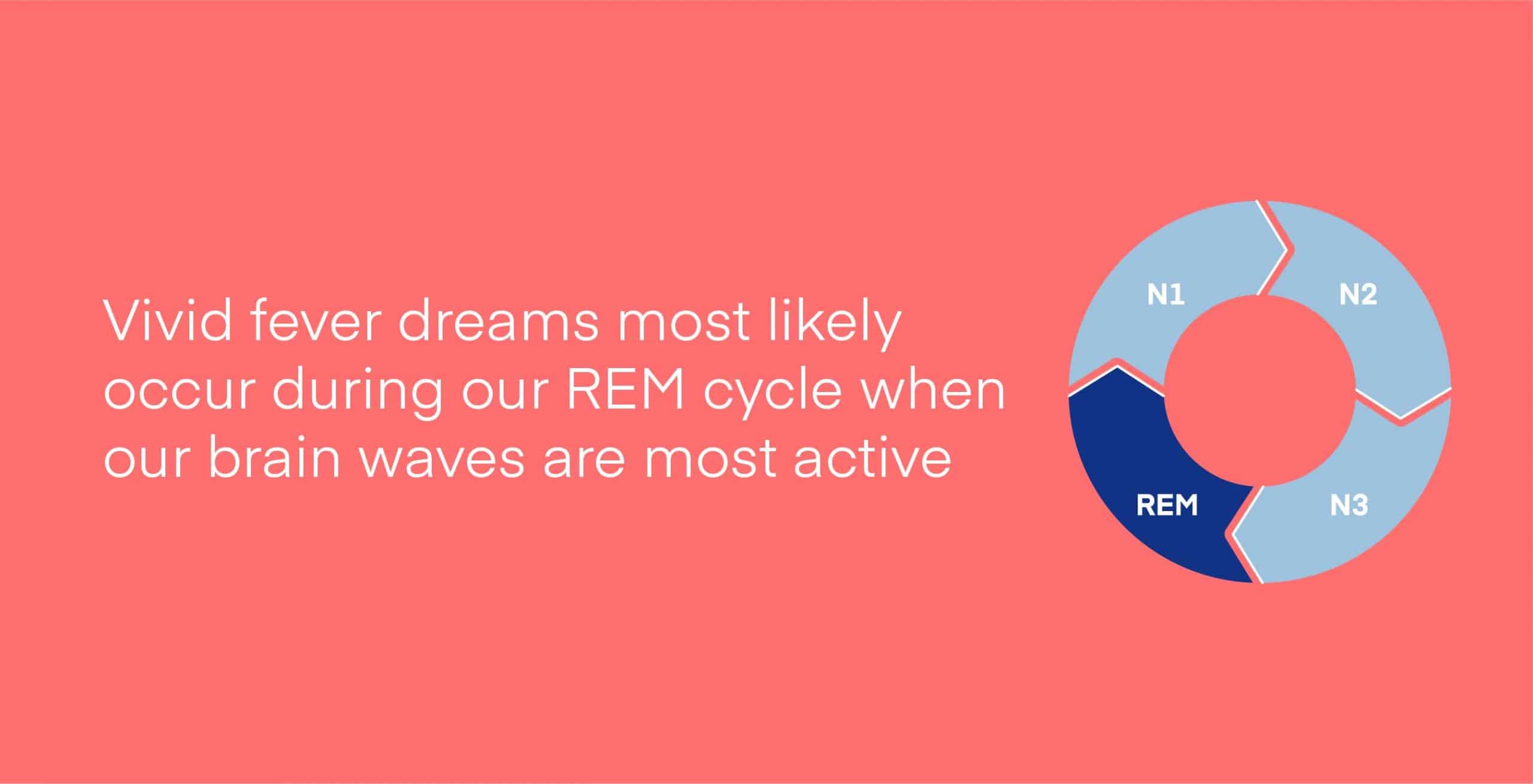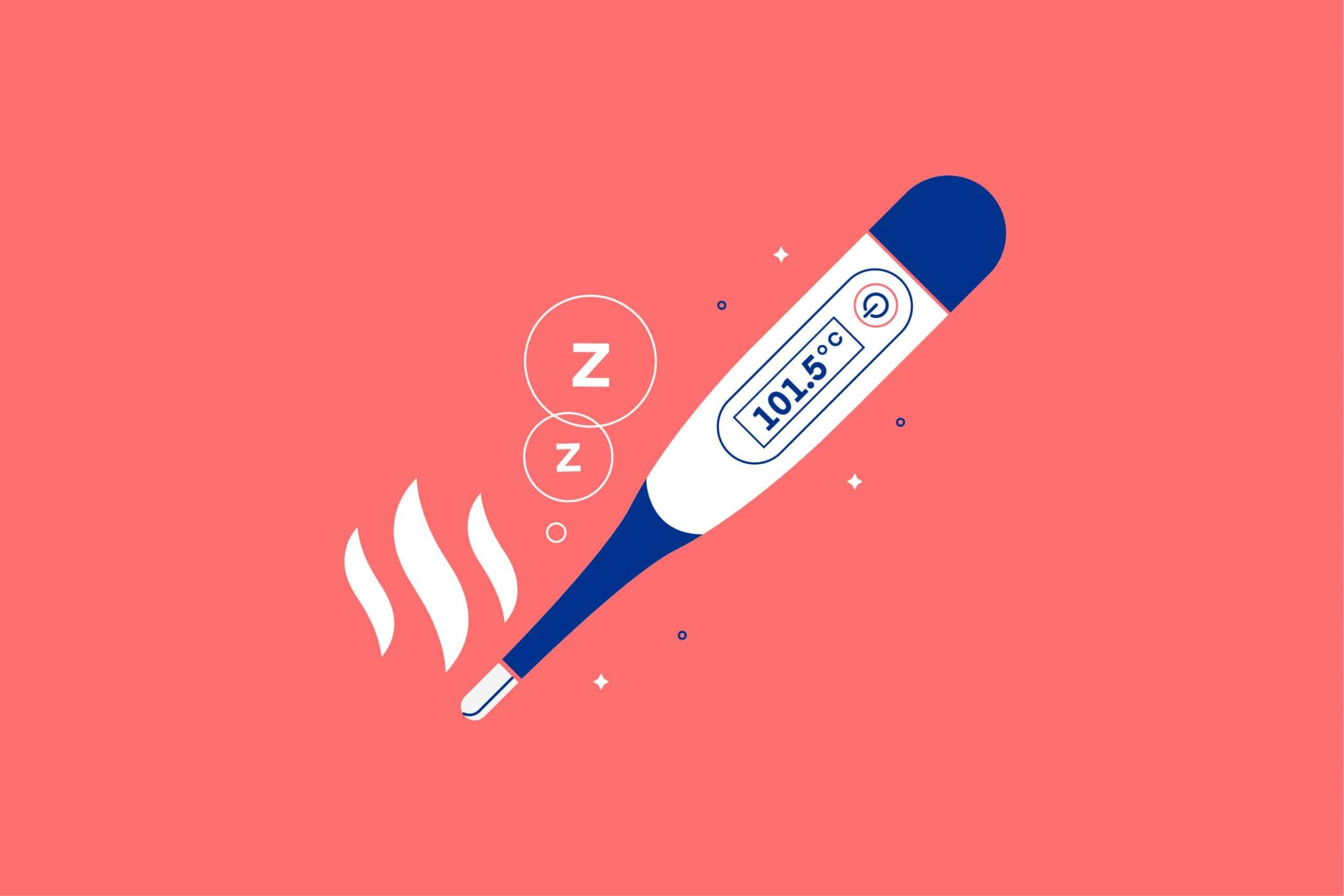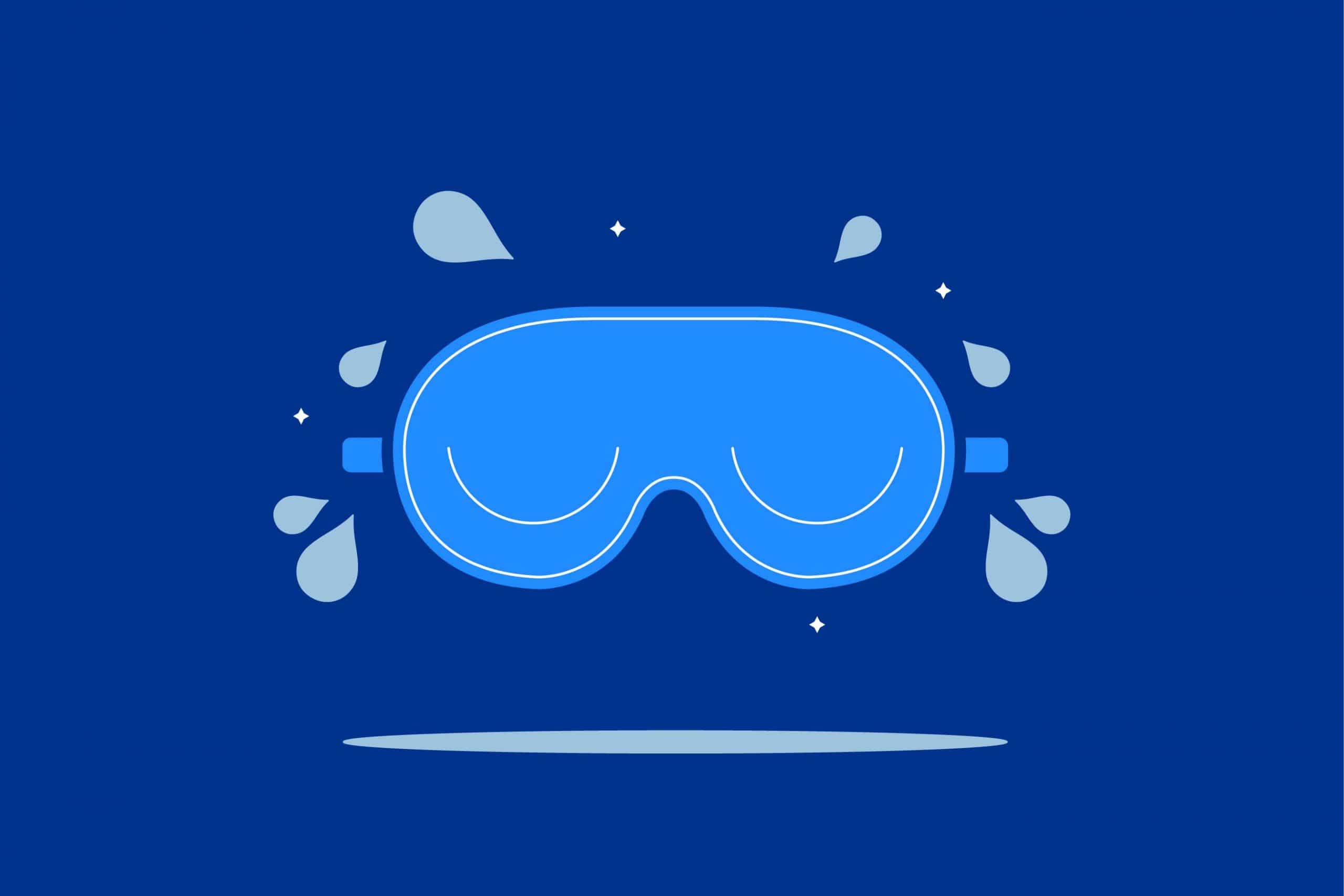Key Takeaways
- Fever’s Impact on Dreaming: Fever is the body’s response to infection, and during a fever, the core body temperature rises. This temperature increase can lead to sleep disturbances, including episodes of vivid and unsettling dreams, referred to as fever dreams.
- Fever Dreams vs. Normal Dreams: Fever dreams are vivid and emotionally intense dreams that occur during a fever, often with disturbing or negative content. They are linked to the body’s elevated temperature during illness and are a result of disrupted sleep patterns.
- Managing Fever Dreams: Fever dreams are a temporary symptom of fever and tend to fade as the body’s temperature returns to normal. Managing the fever itself through fever-reducing medication, rest, and hydration can help alleviate the frequency and intensity of fever dreams.
Our dreams intrigue us, especially the bizarre — dreams with no connection to real life. Dreams are said to be inspired by our memories, interests, events, and day-to-day activities.
Dreaming of strange scenarios with negative connotations disturb us —such dreams occur during illnesses, better known as “fever dreams.” Though termed “fever dream,” these are akin to nightmares that we experience during fever.
Fever is our body’s way of fighting an infection. When we have a fever, our body temperature goes up, usually above 101 degrees, triggering our chances of experiencing a fever dream. If you’ve had a recent fever dream but weren’t exactly sure how it worked, our article will help you better understand the difference between fever dreams and normal dreams.
What Is a Fever Dream?
The normal temperature of a human body usually ranges between 97 and 99 degrees. But when our body is fighting a virus, bacteria, or an infection our immune system goes into action. The core body temperature shoots up between two to seven degrees, triggering our body’s natural defense mechanism.
All kinds of bacteria, viruses, and infections are temperature-sensitive pathogens —higher temperatures prevent pathogens from multiplying in our bodies. Though having a fever is an uncomfortable experience, it is actually our body’s way of attacking harmful pathogens.
With a fever, we see symptoms like high body temperature, aches, chills, sweating, and sometimes bizarre dreams. The content of dreams like these, often disturbing in nature, leave a lasting impression accompanied by intense feelings.
There’s not a lot of scientific research behind fever dreams as of yet. However, there have been a few interesting findings, including a study done in 2013 published in the Journal of Pain and Symptom Management. One participant noted their fever dreams included a recurring dream they’d experienced during adolescence, returning with the fever. Another reported their fever dreams suddenly shifted in tone from positive to negative. According to the study authors, “The basic idea is that the ‘over-heated’ brain is not functioning properly and, therefore, dreams are more bizarre.”
A 2016 study compared reported dreams people had with a fever to regular dreams. 94% said the fever dreams were more negative than normal dreams.
Another more recent study, published in 2024, confirmed this idea, learning once again that fever dreams had a much more negative tone than regular dreams. This confirms what is known as the “continuity hypothesis” of dreaming. This states that dreams are a reflection of experiences from everyday life, including negative ones, and combined with the cognitive impairment caused by a fever, this can create a rather unpleasant night of sleep.
Some people woke up from their recent dreams feeling intense weakness, confusion, irritability, and helplessness, while others experienced acute heat perception, feeling extremely hot upon waking.
Why Do We Experience Fever Dreams?
Adults typically experience four to six sleep cycles through the night, alternating between Non-Rapid Eye Movement (NREM) and Rapid Eye Movement (REM). Non-REM is the more peaceful phase of sleep and takes up about 75 percent of sleep time, while the remaining 25 percent is spent in REM sleep.
Dreams may occur during any stage of sleep, but we are more likely to remember the ones that we experience during REM. During this stage of sleep, our eyes move rapidly behind closed lids while having vivid dreams. Our brain is also responsible for the natural thermoregulation of our body heat, particularly the hypothalamus, but during REM, temperature regulation is not as efficient as during the day.
When we have a fever, our body is fighting an illness. During fever, the hypothalamus triggers an increase in body temperature to fight illness-causing pathogens. Elevated temperature is known to cause sleep disturbances like insomnia, episodes of sleepwalking, or fever dreams. Plus, when you’re sick, your body needs plenty of rest, thus increasing the frequency and likelihood of dreams.
According to research, the bizarre and intense nature of fever dreams is related to high body temperature. Fever has an effect on the cognitive processing of our brain during sleep. Since our brain is unable to perform normally during a high fever, it tends to produce dreams which are unpleasant and unusual in nature. In a study, roughly 94 percent with fever dreams experienced negative dream emotions.

“Fever dreams can be explained by the fact that the same part of the brain is responsible for promoting sleep and regulating body temperature,” says Michele Roberge, RT(R), RPSGT, a neurodiagnostics lead technologist at Parrish Sleep Disorder Center. “When the hypothalamus works to increase body temperature to combat an infection, this can cause disruptions in sleep – leading to what we refer to as ‘fever dreams’. The vivid fever dreams most likely occur during our REM cycle when our brain waves are most active. Although there are several theories about dreams, they remain a scientific mystery.”
What Do We See in Fever Dreams?
Fever dreams are nightmares we experience as a result of having a high body temperature. These are emotionally intense and ghastly dreams with disturbing negative connotations. Since high body temperature makes it difficult to sleep, the disturbing nature of fever dreams increases sleep disruptions. Some of the common themes and visuals in fever dreams have been described as:
- Associated with heat and fire, with visuals like the sky on fire or wax statues melting down. This could be because the body temperature is high and the brain triggers this heat, to keep pathogens at bay. The brain’s awareness of this high body temperature could be a probable reason behind fever dreams being associated with heat.
- Repetitive actions or events.
- Experiencing a fever dream can sometimes be like watching a sci-fi film, replete with images typical of the genre like spatial distortions, blackness, giant insects, and creatures with oversized arms moving around.
- Strange dreams with a high recall value of every minute detail.
- Often associated with something that is intimidating, and stress-inducing, sometimes from your own life experiences or external stimuli.
- Sometimes fever dreams end with a feeling of claustrophobia or vertigo.
Fever Dreams Like Lucid Dreams
Fever dreams have some similarities with lucid dreams because they both have a high recall value. They usually occur during the REM stage of sleep, when the brain is more active. The difference is lucid dreams are not linked to fever. They are sometimes controllable and don’t always have a negative meaning to them. But fever dreams are almost always emotionally intense nightmares experienced during an illness.
You can train yourself to lucid dream, as lucid dreaming sometimes has some advantages, such as boosting creativity or dispelling phobias. Sometimes lucid dreams are used professionally as part of therapy. But fever dreams don’t have any such advantage. Fever dreams are closer to nightmares or emotionally intense dreams with negative undertones due to fever.
FAQs
Does heat cause weird dreams?
Yes. The brain regulates our body’s temperature, and when we have a fever our body’s temperature increases to fight pathogens. Due to excess heat from the high body temperature our brain is unable to perform normally during a fever, it produces unpleasant and unusual dreams. There’s no foolproof way to kick your fever dreams to the curb, but controlling your body temperature at night can help. Take a warm bath before to force your body to cool down, and sleep with cool bedding, like cotton, bamboo, or Tencel.
Do you dream more when you are sick?
If you are down with a fever, sleeping becomes difficult due to high temperature and body aches. Disturbed sleep leads to emotionally intense dreams with a negative tinge to them. You may not remember your fever dream, but you could experience negative moods when you wake up. Try to eat easily digestible foods so as not to disrupt sleep any further, and try to sleep as much as possible to stave off the fatigue.
What are the signs of a fever?
Besides the obvious sign of a temperature over 98.6 degrees Fahrenheit, there are other bodily symptoms of a fever, including: sweating, chills, inability to regulate body temperature (too hot/too cold), sore throat, headaches, muscle aches, and loss of appetite. Fevers are typically caused by illness, but they can also flare up with use of antibiotics or an immunization. More serious signs of poor health, such as a tumor, can also cause fevers.
Can a fever dream be good?
Fever dreams are the result of a fever, which is a sign your body is trying to fight off infection, so no, they are not really good. Sometimes dreams can help your mind clear up some complicated or confusing events, but you don’t need a fever dream to do that. A fever also significantly increases wake time and interrupts REM and non-REM sleep, which are essential for recovery.
Can infections cause nightmares?
Yes, when your body is experiencing a fever or sickness, like sleeping with the flu, you are more likely to experience nightmares because your brain is not functioning properly. If you have a fever, be sure to take fever-reducing medication like ibuprofen (acetaminophen) or aspirin, drink plenty of fluids, and get lots of rest.
Conclusion
You don’t have control over fever dreams, and there is nothing that you can possibly do to prevent it. High body temperature affects the brain’s normal performance and sometimes produces unusual dreams. Treat them as a temporary symptom of a fever, which your body experiences to fight illnesses. Once your body temperature goes back to normal, your fever dreams will fade away too.
About the author
McKenzie Hyde is a Certified Sleep Science Coach and a full-time writer specializing in sleep health and the mattress industry. With a Master of Arts degree in literature and writing from Utah State University, McKenzie combines her passion for writing with her in-depth knowledge of sleep science. Her articles cover a wide range of topics, including best sleep practices for students, the consequences of sleep deprivation, and choosing the right mattress for back pain relief. McKenzie's dedication to delivering accurate and informative content makes her a valuable contributor to the field of sleep health.
View all posts





